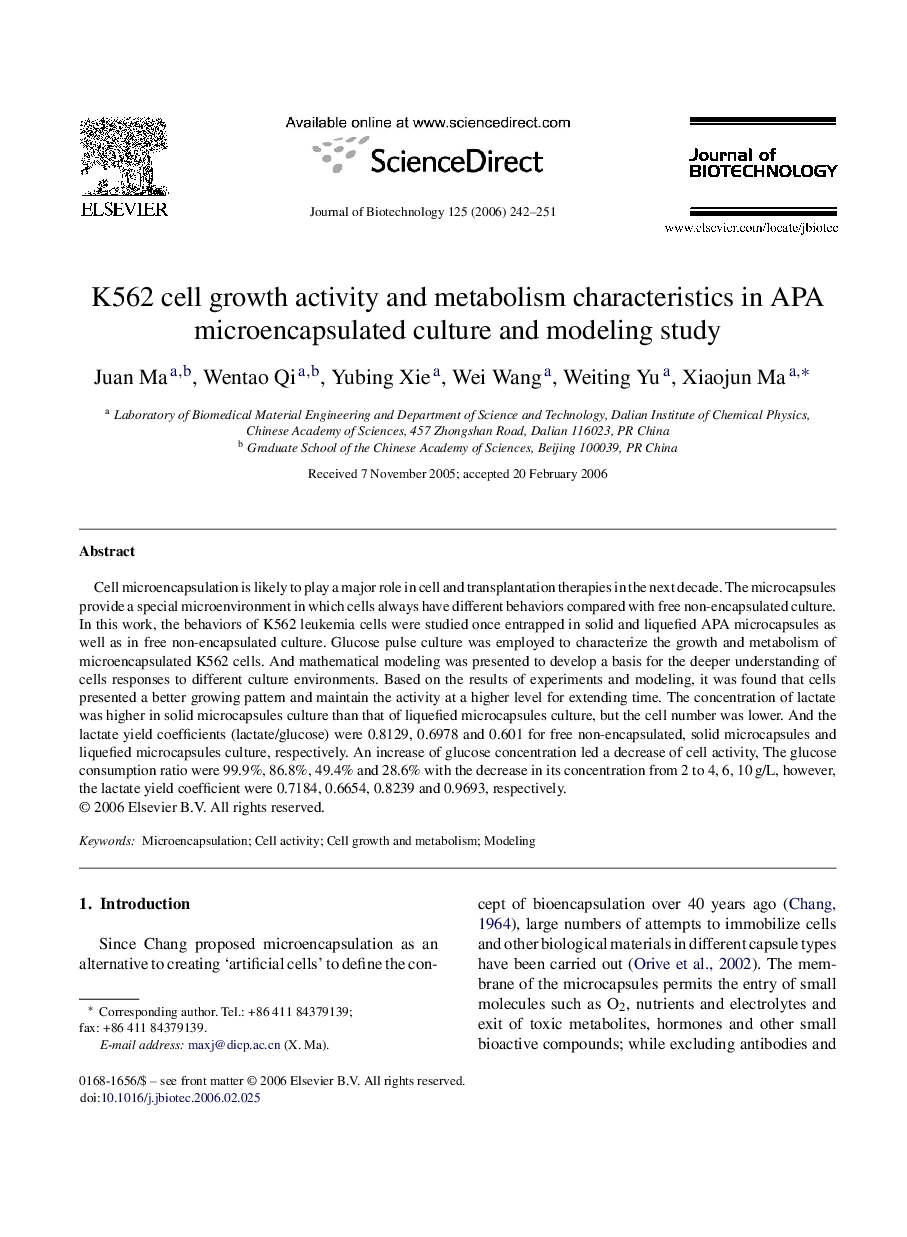| Article ID | Journal | Published Year | Pages | File Type |
|---|---|---|---|---|
| 25749 | Journal of Biotechnology | 2006 | 10 Pages |
Cell microencapsulation is likely to play a major role in cell and transplantation therapies in the next decade. The microcapsules provide a special microenvironment in which cells always have different behaviors compared with free non-encapsulated culture. In this work, the behaviors of K562 leukemia cells were studied once entrapped in solid and liquefied APA microcapsules as well as in free non-encapsulated culture. Glucose pulse culture was employed to characterize the growth and metabolism of microencapsulated K562 cells. And mathematical modeling was presented to develop a basis for the deeper understanding of cells responses to different culture environments. Based on the results of experiments and modeling, it was found that cells presented a better growing pattern and maintain the activity at a higher level for extending time. The concentration of lactate was higher in solid microcapsules culture than that of liquefied microcapsules culture, but the cell number was lower. And the lactate yield coefficients (lactate/glucose) were 0.8129, 0.6978 and 0.601 for free non-encapsulated, solid microcapsules and liquefied microcapsules culture, respectively. An increase of glucose concentration led a decrease of cell activity, The glucose consumption ratio were 99.9%, 86.8%, 49.4% and 28.6% with the decrease in its concentration from 2 to 4, 6, 10 g/L, however, the lactate yield coefficient were 0.7184, 0.6654, 0.8239 and 0.9693, respectively.
